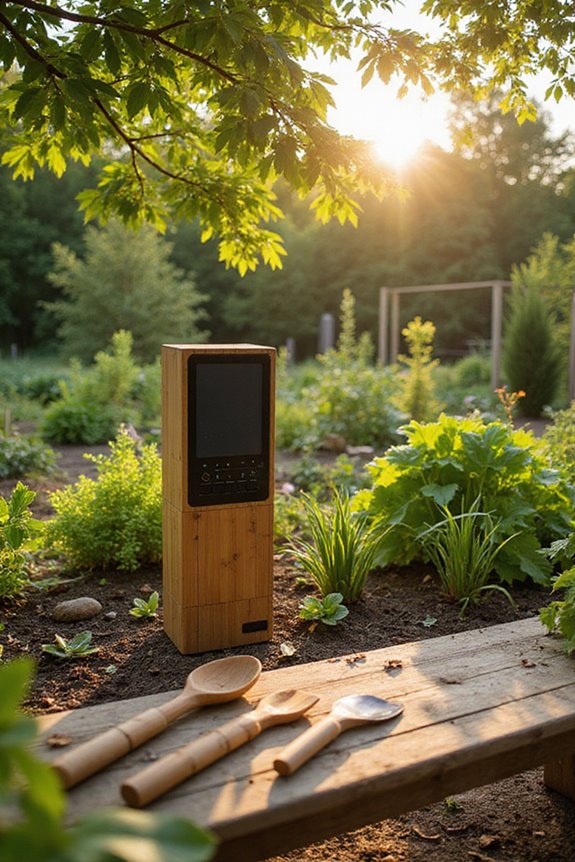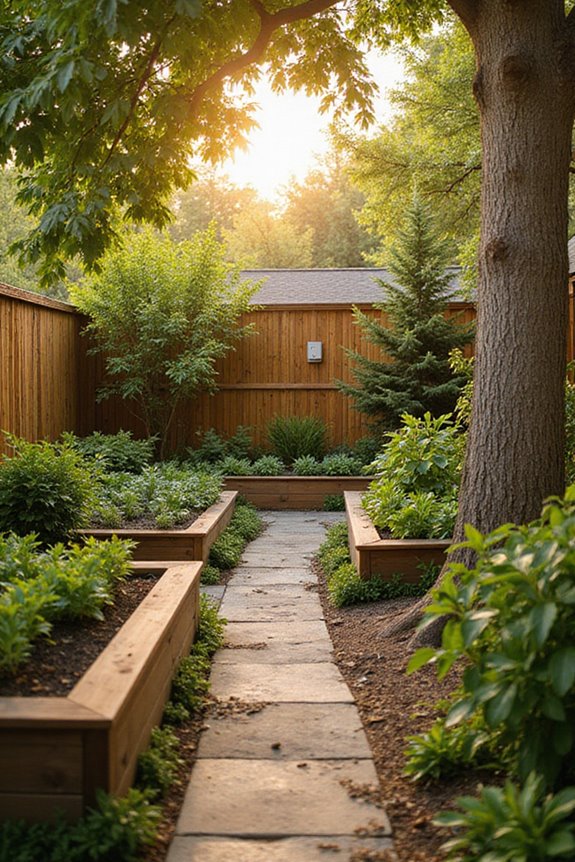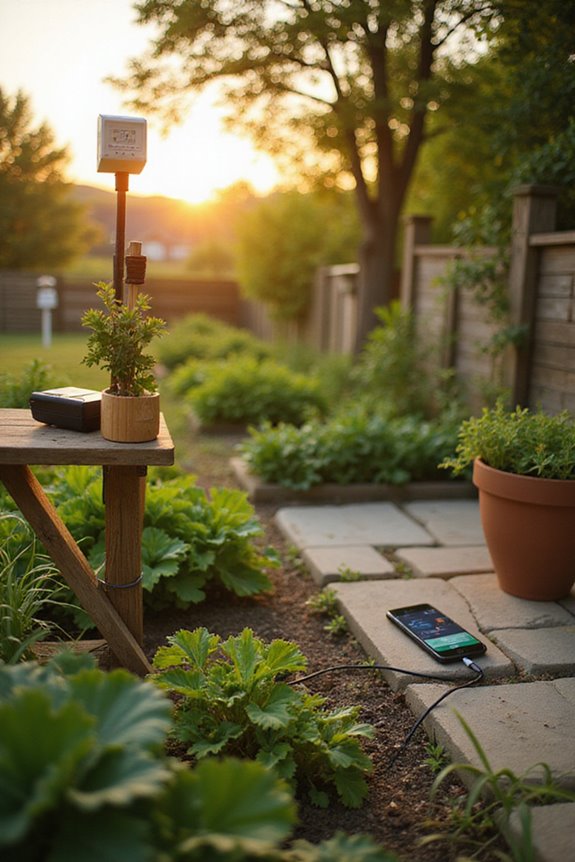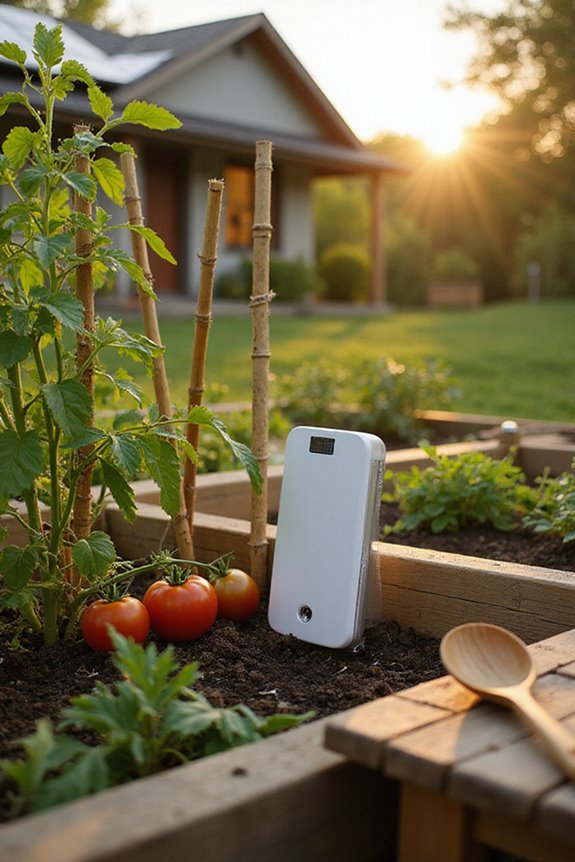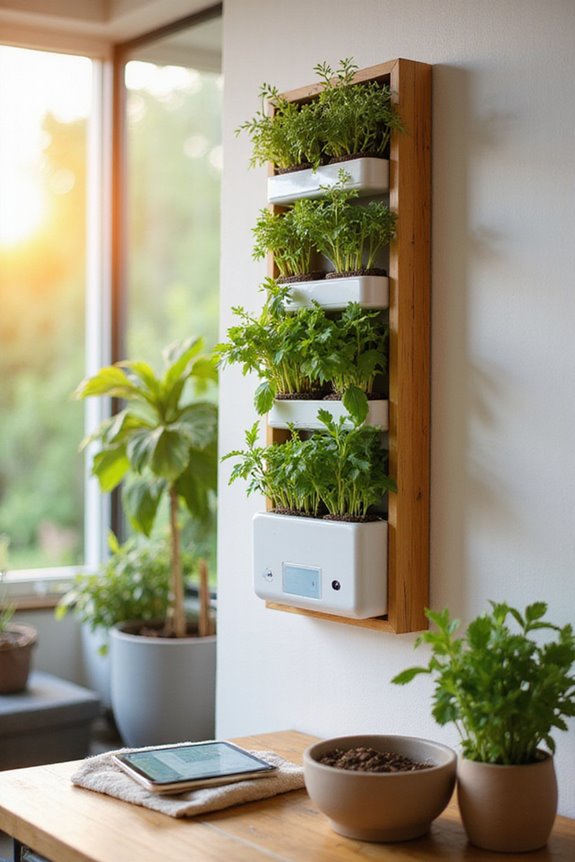Voice-controlled garden devices work by using voice recognition technology to interpret spoken commands. They connect to smart home systems and gather data through sensors that monitor soil moisture, temperature, and sunlight. This information helps automate tasks like watering and adjusting shading for plants. For instance, these devices can also manage garden lights and water features using voice commands. Exploring their advanced features will reveal even more about how they enhance your gardening experience.
Key Takeaways
- Voice-controlled garden devices analyze speech patterns and convert them into actionable commands for garden management.
- They integrate sensors to monitor soil moisture, temperature, and sunlight for optimal plant care.
- Automated systems adjust watering schedules based on weather conditions, conserving resources and enhancing efficiency.
- These devices connect with smart home systems, allowing unified control of garden features via voice commands.
- Accessibility features support hands-free interaction, benefiting individuals with disabilities and enhancing the gardening experience for everyone.
Understanding Voice Recognition Technology
Understanding voice recognition technology is essential as it transforms how we interact with devices. This technology analyzes our speech patterns and converts them into digital signals. It starts with capturing audio and filtering out background noise for clarity. Next, acoustic modeling comes into play, training systems to recognize the fundamental sounds in our language.
For effective recognition, the system compares our unique speech features against a digital database of known words. This process allows it to learn from our individual vocal traits, making it more accurate over time. By utilizing advanced algorithms and models, voice recognition systems can predict what we say, creating a seamless experience as we communicate with our gadgets.
Core Functionalities of Voice-Controlled Garden Devices
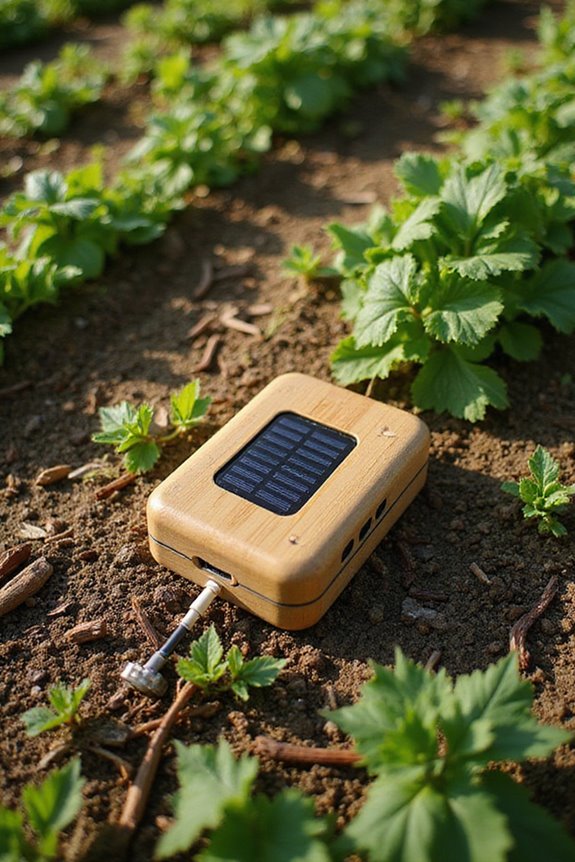
Voice-controlled garden devices offer a range of functionalities that enhance our gardening experience. They feature sensor integration, allowing us to monitor soil moisture, temperature, and sunlight exposure. With this data, our devices can automatically adjust watering or shading, keeping our plants healthy.
Moreover, these devices enable ecosystem connectivity with our smart home systems. This means we can manage garden lights, water features, and pest deterrents all through voice commands. For example, we can ask our device to turn on the garden lights or adjust the irrigation based on weather conditions.
This integration not only simplifies our gardening tasks but also promotes ideal plant health and resource efficiency, making our garden a thriving part of our home.
Smart Irrigation Control Features
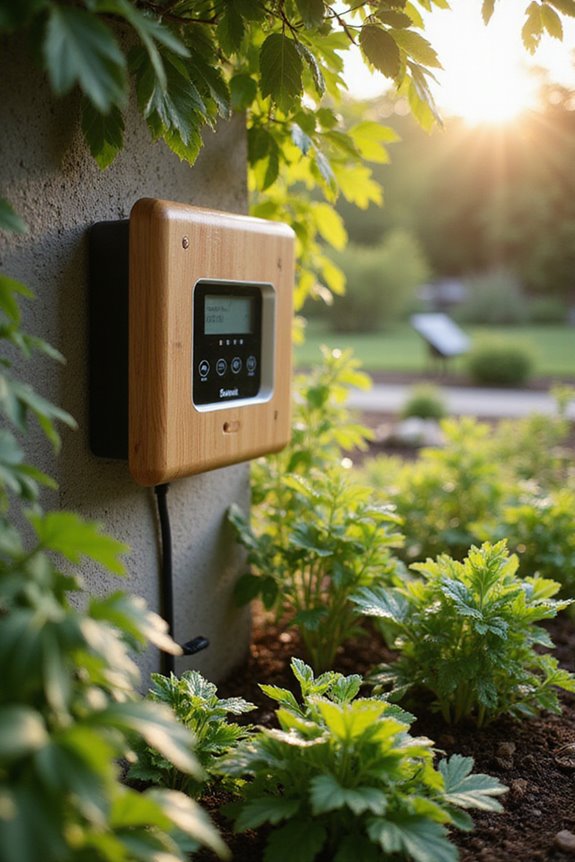
Smart irrigation control features make gardening easier and more efficient for all of us. These systems automatically tailor watering schedules based on local weather conditions. For instance, they skip watering during rain or high winds, which helps us save water.
Here are a few key benefits:
- Weather Adaptation: Smart controllers adjust watering durations monthly to match plant needs.
- Soaking Cycles: They automate watering in phases, preventing runoff and improving soil absorption.
- Voice Control: We can use voice commands through devices like Amazon Alexa to control watering zones.
With these features, managing our gardens becomes a breeze, allowing us to focus on enjoying our outdoor spaces while ensuring our plants thrive.
Modern Outdoor Structure Automation
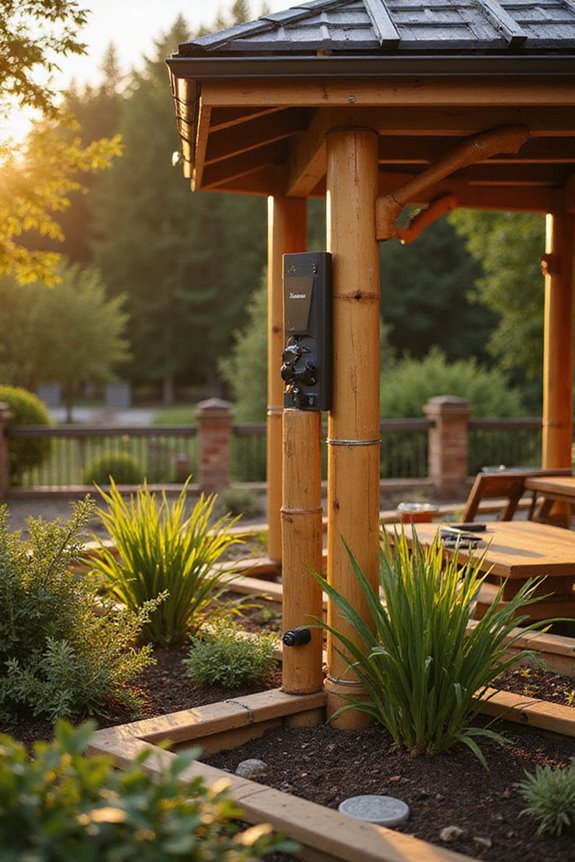
As we explore modern outdoor structure automation, we find that these innovations offer a blend of convenience and efficiency for our outdoor spaces. Many outdoor structures, like pergolas, now feature lightweight aluminum construction, which enhances durability and design flexibility. These structures often include adjustable roofs, allowing us to control sunlight and shade effortlessly.
- Voice Activation: We can use voice commands to adjust our pergolas without manual intervention.
- Smart Integration: These structures connect seamlessly with smart home systems, enabling unified control with devices like Alexa and Google Assistant.
- Adaptive Features: They can also respond to weather changes, ensuring our outdoor areas remain comfortable and functional. Additionally, vertical gardening systems can be integrated to complement these outdoor setups, maximizing space and plant variety.
With these advancements, we can truly enjoy our outdoor environments.
User Experience and Accessibility Benefits
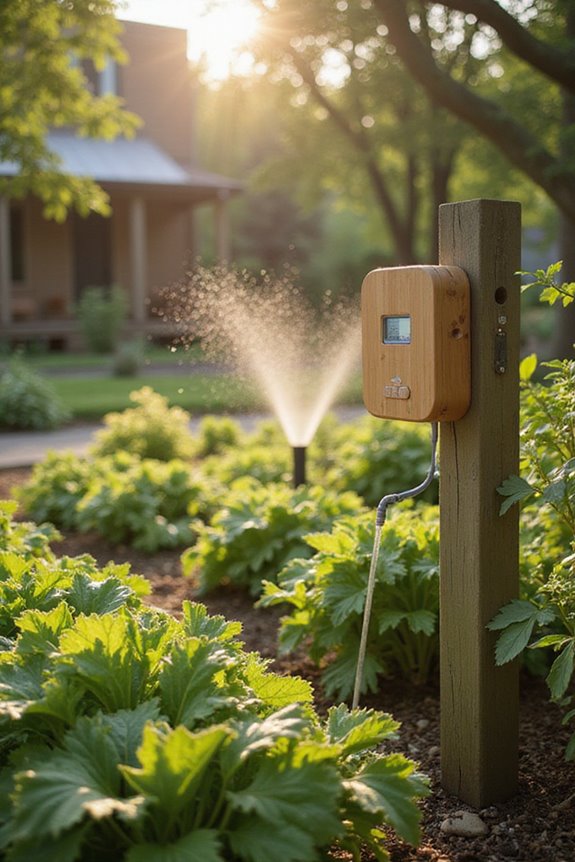
When we consider user experience and accessibility benefits, it’s clear that voice-controlled garden devices make outdoor gardening more inclusive. For individuals with physical disabilities, these devices allow hands-free interaction, enabling them to control watering and lighting without physical strain. Custom voice commands cater to personal abilities, enhancing user experience.
Visually impaired gardeners benefit from auditory feedback, which replaces the need for screens. This feature streamlines access to gardening controls. Additionally, voice assistance provides real-time guidance, making tasks easier to manage.
For those with cognitive or learning disabilities, speaking naturally reduces stress. Voice-activated systems simplify gardening tasks and improve engagement. Overall, these accessibility features foster independence, allowing everyone to enjoy gardening together.
Challenges and Future Trends
Voice-controlled garden devices face several challenges that could hinder their effectiveness and user satisfaction. One major issue is privacy concerns; these devices constantly listen for commands, raising risks over data collection and potential misuse. Additionally, unauthorized access can lead to security breaches, affecting system functionality.
Moreover, connectivity issues present another hurdle. Many devices depend heavily on stable internet connections, and poor Wi-Fi can result in intermittent functionality. Compatibility with various voice assistants can also complicate user experience.
Looking ahead, we can anticipate advancements in offline voice recognition and AI integration. These improvements could enhance command accuracy and user interaction, while expanded functionalities will make our gardening tasks even more efficient.
Frequently Asked Questions
What Types of Devices Can Be Controlled by Voice Commands?
We can control various devices with voice commands, including smart irrigation systems that manage watering schedules and automated lights that create ambiance. Together, we enhance our outdoor spaces effortlessly, making gardening more enjoyable and convenient.
How Do I Set up Voice-Controlled Garden Devices?
To set up voice-controlled garden devices, we’ll follow the installation process and meet all setup requirements. We’ll guarantee strong Wi-Fi, choose compatible devices, and connect everything through our preferred voice assistant for seamless control together.
Can Voice-Controlled Devices Work Offline?
While offline functionality can enhance our gardening experience, we must acknowledge voice command limitations that arise. Together, we can embrace the challenge, finding ways to make voice-controlled devices work effectively even without internet access.
Are There Compatibility Issues With Different Voice Assistants?
We recognize voice assistant compatibility can be tricky. Device integration challenges often arise, limiting our choices and creating frustration. It’s essential to evaluate these factors before investing in voice-controlled garden devices for our shared experiences.
How Are Voice Commands Customized for Individual Users?
We can customize voice commands through voice recognition technology, creating unique profiles that adapt to our speech patterns. This allows us to enjoy personalized settings, making our garden experiences feel truly tailored to our preferences.

